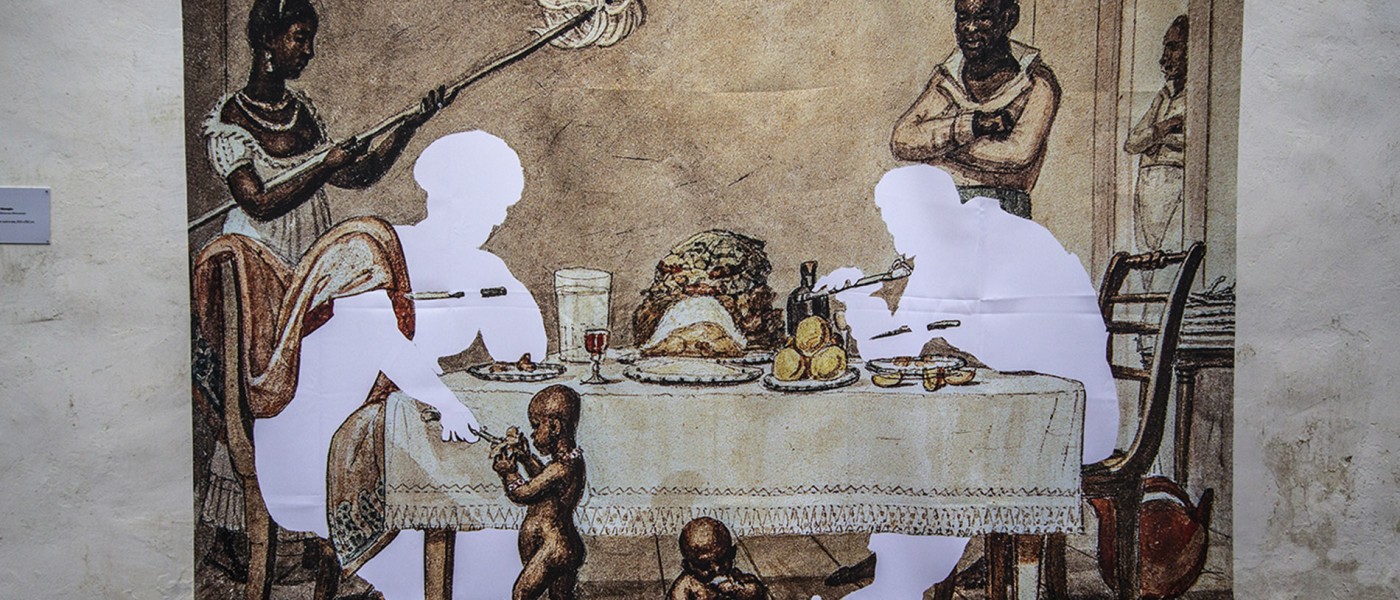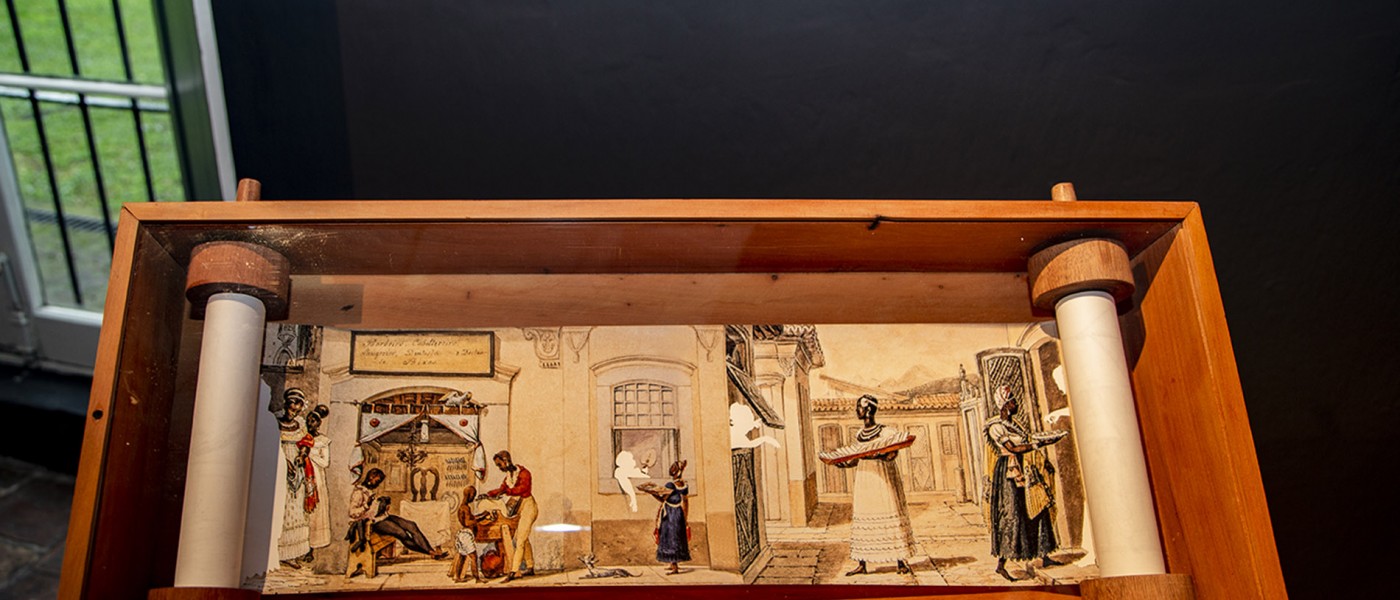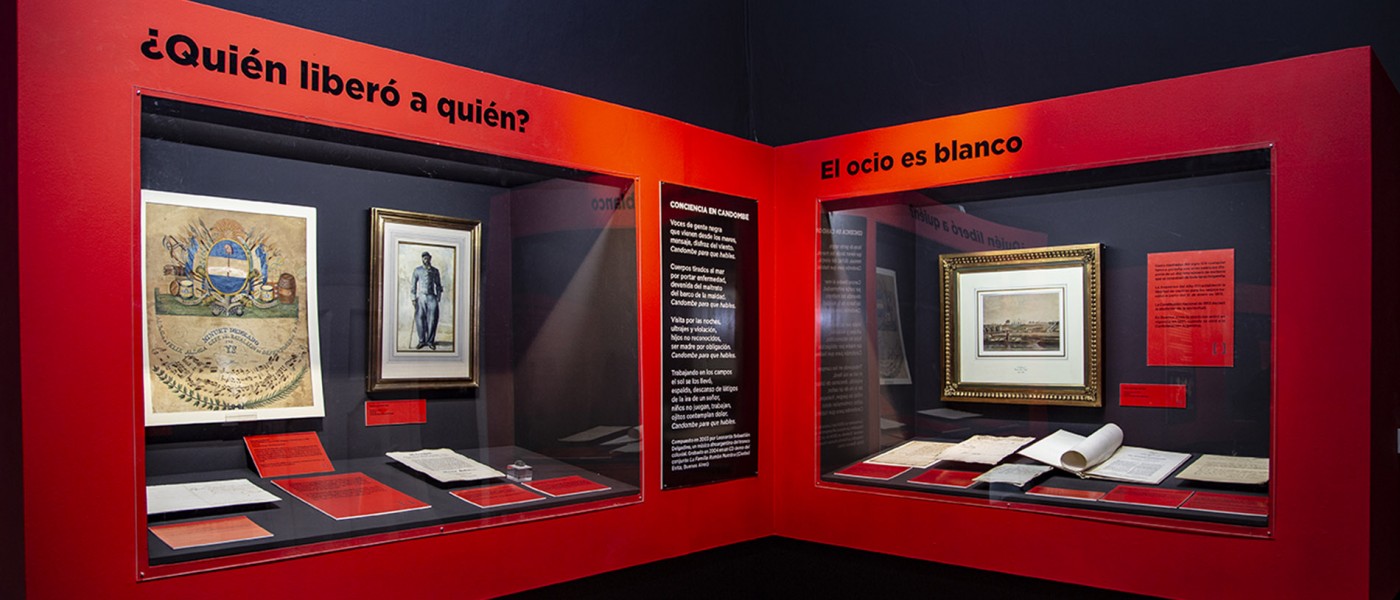Marcelo Masagao practices a series of subtle yet effective interventions on a set of watercolours painted by Jean-Baptiste Debret in 1830, emphasizing the upper-class establishments belonging to Brazilian colonial society, in a way which could be applied just as easily to any other Latin American country. By cutting out all the representations of white men from the scenes, leaving a mere silhouette in their place, the artist creates a tension between the disappearance of the white man and his absence — always in white, even after such an attempt to erase him from existence.
Different exhibition devices, such as a small-sized work box, or blowing up certain scenes to a large scale, serve to call out the spectator and reposition them vis-à-vis the changing perspectives of the same work.
The issue, which was originally very much a product of its time, at the turn of the 19th century, is thus not only revisited from a critical point of view, but also functions as a gesture of warning. The works underscore the many injustices and inequalities that still persist to this day in contemporary society, some reappearing, in crudely large dimensions, in many different regions of our otherwise civilized world.






